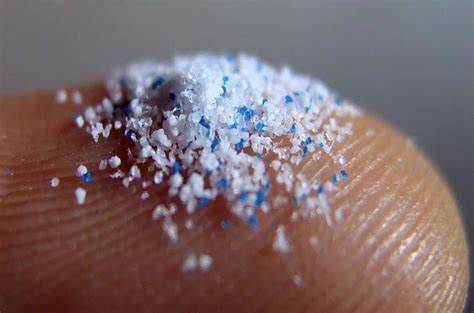Microplastics are tiny particles of plastic that are contaminating the entire planet. These particles have been found in everything from the summit of Mount Everest to the deepest oceans. People are consuming microplastics via food and water, as well as breathing them in. In fact, a recent study has found that microplastics cause damage to human cells in the laboratory at levels that are known to be eaten by people via their food.
The research, which was published in the Journal of Hazardous Materials, analyzed 17 previous studies that looked at the toxicological impacts of microplastics on human cell lines. The scientists compared the level of microplastics at which damage was caused to the cells with the levels consumed by people through contaminated drinking water, seafood, and table salt. They found that specific types of harm, including cell death, allergic response, and damage to cell walls, were caused by the levels of microplastics that people ingest.
While the health impact of microplastics on the human body is uncertain because it is not known how long microplastics remain in the body before being excreted, harmful effects on cells are often the initiating event for health effects, according to Evangelos Danopoulos, of Hull York Medical School, UK, and who led the research. He stated, “We should be concerned. Right now, there isn’t really a way to protect ourselves.”
Future research could help identify the most contaminated foods and avoid them, but the ultimate solution is to stop the loss of plastic waste. Once plastic is in the environment, it is difficult to remove. Research on the health impact of microplastics is increasing, but much more needs to be done to fully understand the risks associated with exposure.
The study also showed that irregularly shaped microplastics caused more cell death than spherical ones. This is important for future studies, as many microplastics bought for use in laboratory experiments are spherical and may not be representative of the particles humans ingest.
Danopoulos said the next step for researchers was to look at studies of microplastic harm in laboratory animals. Experiments on human subjects would not be ethical. However, a recent study showed that tiny plastic particles in the lungs of pregnant rats pass rapidly into the hearts, brains, and other organs of their fetuses. In December, microplastics were found in the placentas of unborn babies, which the researchers said was “a matter of great concern.” In October, scientists showed that babies fed formula milk in plastic bottles were swallowing millions of particles a day.
In conclusion, microplastics are a significant environmental and health concern. The research indicates that microplastics cause damage to human cells at levels known to be eaten by people via their food. The health impact of microplastics on the human body is still uncertain, and more research is needed to fully understand the risks associated with exposure. However, the evidence is clear that we need to take action to reduce the amount of plastic waste in the environment to protect both human health and the planet.

